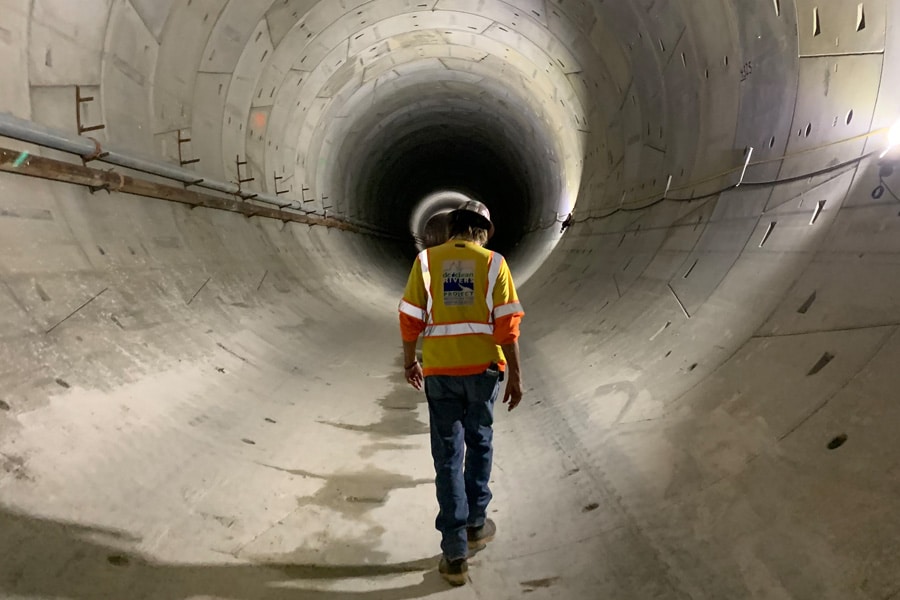The public sector accounts for around a quarter of the UK’s construction output annually: local authorities develop schools, social housing, leisure facilities and other uses every year.
But with resources at a premium, local councils face an uphill struggle to deliver the assets their communities need on time and within budget.
This is where technology, particularly digital innovations, can help. Public sector organizations are increasingly turning to digital ways of working to help them deliver services better and more efficiently.
In a series of articles, Built is looking at how Bluebeam can help local authorities and public sector organizations respond to the needs of their communities and businesses.
This feature considers how Bluebeam’s software can help developers come to grips with assessing the quantities of materials required for a project and making estimates to ensure its delivery happens on time and within budget.
Getting to grips with costs
Understanding the scope of a construction project requires coming to grips with its cost. How much will have to be spent on the materials? How much material will be required? What is the expected cost at the design stage, and is this likely to change as the project moves forward?
Accurately determining the cost of a project—direct and indirect costs, which include materials, labor, legal paperwork and so on—will make all the difference to a development being delivered as planned.


Bluebeam Resource Hub
Browse case studies, watch webinars, and see what’s new with Bluebeam.Quantity estimates take place during the tender and planning stages. Make a mistake during the quantity estimation phase and you may be faced with a series of unanticipated costs that harm the job’s profitability. Using Bluebeam allows contractors to make clear plans for their jobs and estimate costs more accurately.
Time is money, and with the need to hit tender submission budgets and maximize employee contributions a pressing concern, few contractors can afford to use manual quantity estimation processes. Yet speed ought not to come at the expense of accuracy, as a quantity estimation mistake can lead to wasted pounds.
Using the right quantity estimation solution for construction organizations can deliver both greater accuracy and speed. Efficiencies created by improved quantity estimation processes can extend throughout an entire project. Being able to clearly communicate and disseminate data between office staff and site teams means every department can spend less time coordinating and more time delivering the project.
The digital approach helps obtain accurate figures during the tender proposals, which can make a huge difference to the budgeting process. A mistake caused by an imprecise manual input may seem small on paper, but it could lead to the contractor spending too much on materials or quoting too low a price to the client. In either case, the financial hit from that one issue could add up to more than the cost of the software.
Benefitting the estimation process
A more efficient digital quantity estimation process can benefit companies in other ways. Since fewer hours are required to prepare accurate tenders, employees can perform other work that adds value. This allows contractors to get more from their staff without increasing headcount.
Contractors who are ready to replace their paper-based quantity estimation calculations with digital tools can start seeing these changes immediately.
Bluebeam has tools for quantity estimations that are based on feedback and ideas from professionals in the field who have used the software for years. Most notably, Bluebeam has added upgrades for estimators that will help manage scale through automatic prompts.
The automatic scale prompts guarantee 100% correct scale for every page of a document. A dialogue will automatically prompt the user to calibrate or input a known scale on every page and then apply that scale to a page range of the user’s choosing.
Furthermore, there are common pre-set scales for imperial and metric measurements, and scales can be viewed or modified in several places throughout Bluebeam to make your scale always visible to you. These changes promise to reduce errors and make scale simple to find and use. That way, users can have confidence that the scale is set correctly on every page.
Collaboration via digital technology
Local authorities have benefitted from using Bluebeam to smooth the estimation process. In Merthyr Tydfil, the town’s bus station was run down and in need of an overhaul. Built in the 1960s, it was in poor condition, fell way below Equality Act standards and had begun to suffer from antisocial behavior.
Merthyr Tydfil County Borough Council (MTCBC) envisioned a new, state-of-the-art facility next to the railway station that would be a modern, high-quality transport hub. It would form the first puzzle piece of the strategic town center master plan and act as a catalyst for regional mobility and connectivity to boost the town’s redevelopment.
To deliver the project, MTCBC had to collaborate closely with both builder Morgan Sindall and architect Capita. With work underway when the COVID-19 pandemic hit, this added the complication of having much of the delivery team working remotely.
As the project spanned more than six years, the team had to iterate its design several times based on new information, including new government funding into the electrification of public transport.
MTCBC found that Bluebeam fostered clear, fast communication between its internal teams, Morgan Sindall and Capita, leading to successful collaboration on sustainable initiatives.
Speeding up delivery
Bluebeam allowed the team to communicate five times quicker than had it not been used. Tasks that would usually take a week took a day. Bluebeam was part of the standard toolkit for both builder and architect, so the entire team, including many of the subcontractors, used it throughout the project.
This approach helped with the management of change since there was a single source of the most up-to-date information.
The flexibility of Bluebeam’s Design Review, Quantity and Estimation tools meant the team could adapt to this change more easily. Quantity and estimating processes were at least 80% faster, Morgan Sindall said.
The quantity surveying team used Bluebeam tools to create more accurate measurements and cost estimates. Measurement tools in Bluebeam helped them capture a project’s true scope and then track measurements in the Markup List and export data easily to Microsoft Excel.
The planning team that put together the construction program used the same tool for sequencing and planning the project timelines. These tools also allowed for faster, more accurate and more thorough quality assessment and quality control reviews.
On the successful completion of the project, the quantity surveying team described Bluebeam as “the best thing ever.”















